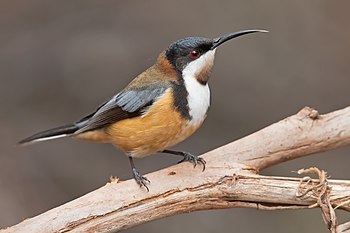From today's featured articleTurtles are reptiles characterized by a shell developed mainly from their ribs. The shell consists of two parts: the domed carapace on the back, and the flatter plastron on the belly. There are 360 living and recently extinct turtle species, including land-dwelling tortoises and freshwater terrapins. They are found on most continents, some islands and, in the case of sea turtles, much of the ocean. Their closest living relatives are crocodilians and birds. Turtles are ectotherms or "cold-blooded", meaning that their internal temperature varies with their direct environment. They are generally opportunistic omnivores and mainly feed with limited movements. Turtles lay their eggs on land; sea turtles migrate long distances to lay their eggs on a favored beach. Turtles have appeared in myths and folktales. Some species are widely kept as pets. Turtles have been hunted for their meat and shells, and for use in traditional medicine. Many species are threatened due to habitat destruction. (Full article...)
Recently featured:
Did you know ...
|
In the news
On this dayMay 23: Aromanian National Day; Victoria Day in Canada (2022)
|
From today's featured list
Jimi Hendrix, an American guitarist and singer-songwriter, appeared in several commercially released films of concerts and documentaries about his career, including two popular 1960s music festival films – Monterey Pop (1968) and Woodstock (1970). A short documentary, Experience (1968), also known as See My Music Talking, was also screened. At the time of his death, two concert films were in development. Jimi Plays Berkeley (1971) was the first film featuring Hendrix to be issued posthumously. A second, tentatively titled The Last Experience, was a film of the last British concert of Hendrix's band, the Jimi Hendrix Experience (pictured). However, legal difficulties have prevented its release. Over the years, many concert films and documentaries have been released. (Full list...)
Today's featured picture

|
The eastern spinebill (Acanthorhynchus tenuirostris) is a species of honeyeater found in south-eastern Australia in forests, woodland and gardens. It is around 6 in (15 cm) long and has a distinctive black, white and chestnut plumage, a red eye and a long downcurved bill. It supplements its diet of nectar with small insects and other invertebrates. This male spinebill was photographed at the Mogo Campground, New South Wales. Photograph credit: John Harrison
Recently featured:
|
Other areas of Wikipedia
- Community portal – The central hub for editors, with resources, links, tasks, and announcements.
- Village pump – Forum for discussions about Wikipedia itself, including policies and technical issues.
- Site news – Sources of news about Wikipedia and the broader Wikimedia movement.
- Teahouse – Ask basic questions about using or editing Wikipedia.
- Help desk – Ask questions about using or editing Wikipedia.
- Reference desk – Ask research questions about encyclopedic topics.
- Content portals – A unique way to navigate the encyclopedia.
Wikipedia's sister projects
Wikipedia is written by volunteer editors and hosted by the Wikimedia Foundation, a non-profit organization that also hosts a range of other volunteer projects:
-
Commons
Free media repository -
MediaWiki
Wiki software development -
Meta-Wiki
Wikimedia project coordination -
Wikibooks
Free textbooks and manuals -
Wikidata
Free knowledge base -
Wikinews
Free-content news -
Wikiquote
Collection of quotations -
Wikisource
Free-content library -
Wikispecies
Directory of species -
Wikiversity
Free learning tools -
Wikivoyage
Free travel guide -
Wiktionary
Dictionary and thesaurus
Wikipedia languages
This Wikipedia is written in English. Many other Wikipedias are available; some of the largest are listed below.
-
1,000,000+ articles
-
250,000+ articles
-
50,000+ articles




